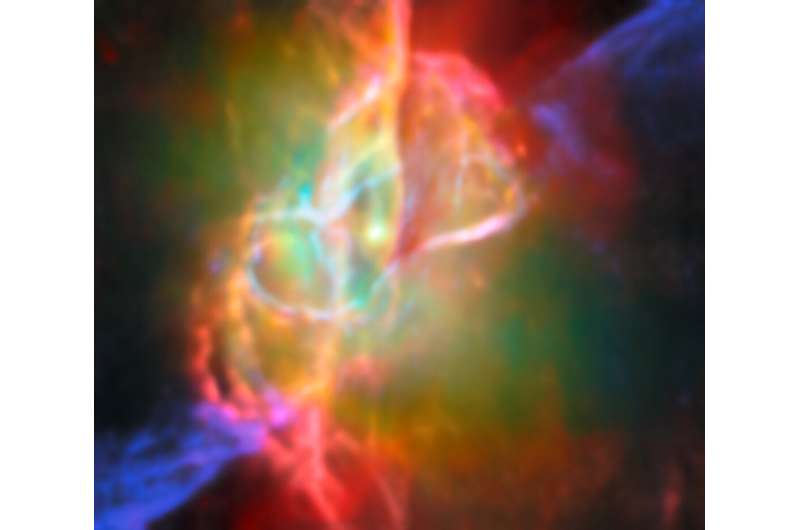
Clues about how worlds like Earth may have formed have been found buried at the heart of a spectacular “cosmic butterfly.” With the help of the James Webb Space Telescope, researchers say they have made a big leap forward in our understanding of how the raw material of rocky planets comes together.
This cosmic dust—tiny particles of minerals and organic material which include ingredients linked to the origins of life—was studied at the core of the Butterfly Nebula, NGC 6302, which is located about 3,400 light-years away in the constellation Scorpius.
From the dense, dusty torus that surrounds the star hidden at the center of the nebula to its outflowing jets, the Webb observations reveal many new discoveries that paint a never-before-seen portrait of a dynamic and structured planetary nebula.
They have been published in Monthly Notices of the Royal Astronomical Society.
Most cosmic dust has an amorphous, or randomly oriented, atomic structure, like soot. But some of it forms beautiful, crystalline shapes, more like tiny gemstones.
“For years, scientists have debated how cosmic dust forms in space. But now, with the help of the powerful James Webb Space Telescope, we may finally have a clearer picture,” said lead researcher Dr. Mikako Matsuura, of Cardiff University.
“We were able to see both cool gemstones formed in calm, long-lasting zones and fiery grime created in violent, fast-moving parts of space, all within a single object.
“This discovery is a big step forward in understanding how the basic materials of planets come together.”
The Butterfly Nebula’s central star is one of the hottest known central stars in a planetary nebula in our galaxy, with a temperature of 220,000 Kelvin.
This blazing stellar engine is responsible for the nebula’s gorgeous glow, but its full power may be channeled by the dense band of dusty gas that surrounds it: the torus.
The new Webb data show that the torus is composed of crystalline silicates like quartz as well as irregularly shaped dust grains. The dust grains have sizes on the order of a millionth of a meter—large, as far as cosmic dust is considered—indicating that they have been growing for a long time.
Outside the torus, the emission from different atoms and molecules takes on a multilayered structure. The ions that require the largest amount of energy to form are concentrated close to the center, while those that require less energy are found farther from the central star.
Iron and nickel are particularly interesting, tracing a pair of jets that blast outward from the star in opposite directions.
Intriguingly, the team also spotted light emitted by carbon-based molecules known as polycyclic aromatic hydrocarbons, or PAHs. They form flat, ring-like structures, much like the honeycomb shapes found in beehives.
On Earth, we often find PAHs in smoke from campfires, car exhaust, or burnt toast.